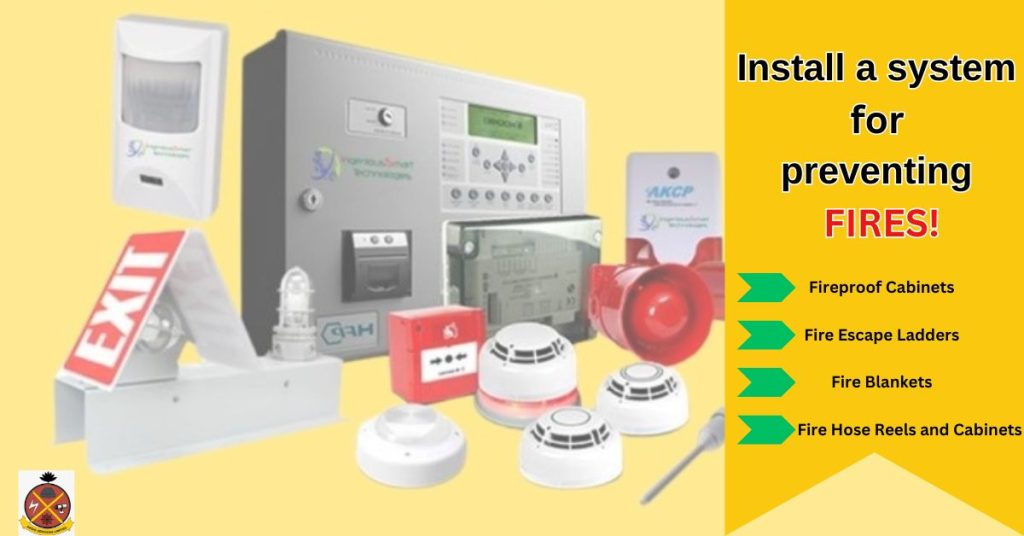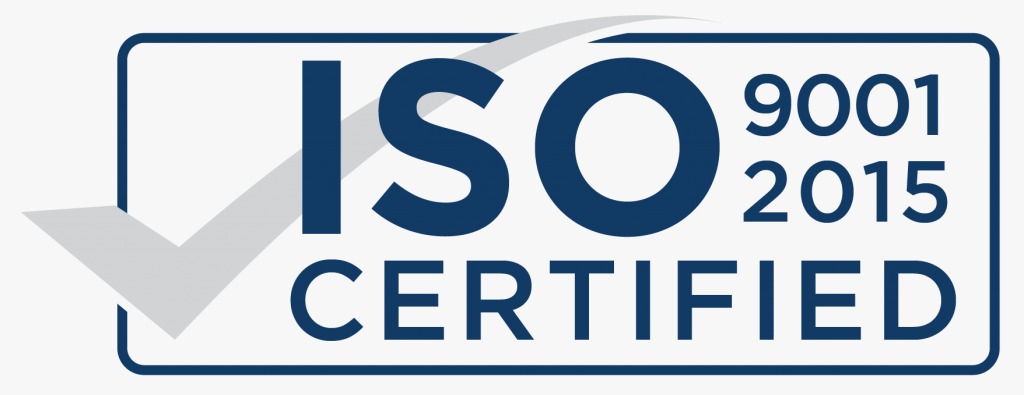Are you involved in an upper-level managerial role in any high-rise building, large organizational office, or multi-storied factory? Are you careless about premise security or worried about your structure safety but need help finding what systems can relieve you from the uncertainty? If you’re indifferent, you should be cautious in rethinking future casualties while breaking out fire incidents.
However, as an Industrial factory or space owner, if you’re not finding an emergency fire equipment checklist for safety and ensuring trouble-free operation, this article might work from choosing the suitable fire safety equipment for your home or buildings up to the enormous benefits of installing them.
In our blog post, we’re sharing the different types of fire emergency equipment. Additionally, it explains the importance of using emergency fire equipment and management systems and provides a guide to follow during a fire accident.
Quick Overview
Emergency Fire equipment
Fire emergency equipment is crucial for managing and mitigating fire incidents. Having the appropriate equipment readily available can help prevent fires from spreading, protect people’s lives, and minimize property damage. you should rethink about security of Here are some essential fire emergency equipment items:
Fire Extinguishers:
These are portable devices used to put out small fires. Different fire extinguishers are designed to handle specific types of fires, such as those caused by flammable liquids, electrical equipment, or ordinary combustibles. They are typically found in most buildings and come in different types, such as water, foam, CO2, and dry chemical powder, to put out different types of fires.
Fire Alarm Systems:
These systems detect the presence of fire or smoke and alert occupants through audible alarms, strobe lights, or both. Emergency fire equipment like fire alarm systems provide early warning, allowing people to evacuate the premises quickly and safely.
Smoke Alarms:
Smoke alarms are designed to detect smoke and alert people to the presence of a fire. They should be installed in every room, including hallways and stairwells.
Fire Sprinkler Systems:
Sprinkler systems are designed to spray water or other extinguishing agents automatically when a fire is detected. They help suppress fires, control their spread, and provide additional time for evacuation. They are typically installed in commercial buildings and high-rise buildings.
Fire Hose Reels and Cabinets:
These reels store fire hoses connected to a water supply. They help fight larger fires or provide a continuous water supply until professional firefighters arrive. They are typically found in commercial buildings and industrial settings.
Fire Blankets:
Fire blankets are non-flammable sheets made of materials such as fiberglass or wool. They can smother small fires or wrap around individuals to protect them from flames and heat.

Fire Escape Ladders:
These portable ladders are designed to provide a means of escape from the upper levels of a building in case of fire or other emergencies.
Emergency Lighting and Exits signs:
Emergency lighting systems automatically activate in the event of a power outage caused by a fire, providing illumination to aid evacuation.
Fire Hydrants and Standpipes
Fire hydrants and standpipes are essential components of a building’s fire protection system. These devices provide access to water for firefighters to use when battling a fire. Fire doors are also essential components of a building’s fire protection system. These doors are designed to prevent the spread of fire and smoke and are often used in stairwells, hallways, and other areas where fire protection is critical.
Fireproof Safes and Cabinets:
These safes and cabinets provide a secure place to store important documents, cash, and other valuables or essential items and protect them from fire damage. These safes and cabinets are designed to withstand high temperatures and flames and are often used in homes, businesses, and other settings where fire protection is critical. These cabinets are designed to store flammable materials, reducing the fire risk safely.
Fireproofing materials
One of the comprehensive fire safety equipment is fireproof ingredients. are used to protect buildings from fire damage. These materials are applied to the building’s structure to prevent fire from spreading and damaging the building. Fireproofing materials can be applied to walls, ceilings, and floors and can be made from a variety of materials, including cementitious materials, intumescent coatings, and fire-resistant boards.
Personal Protective Equipment (PPE):
Firefighters and other emergency responders require specialized protective gear, including fire-resistant clothing, helmets, gloves, boots, and breathing apparatus, to safely perform their duties.
How to choosing fire emergency equipment for a building
Several factors must be considered when choosing the right fire equipment for a building. These factors include:
- Type of building: The building that needs fire equipment is an essential factor to consider. Different types of buildings require different types of fire equipment. For example, a high-rise building may require more fire equipment than a small office building.
- Size and layout: The size and layout of the building are essential factors to consider when selecting fire equipment. The larger the building, the more fire equipment will be required to cover the entire area.
- Building materials: The type of materials used in building construction is an essential factor to consider. Different materials have different fire ratings, which can affect the type of fire equipment required.
- Occupancy level: The number of people in the building is another essential factor when selecting fire equipment. The more people in the building, the more fire equipment will be required to ensure their safety.
- Local fire codes and regulations: When selecting fire equipment, local fire codes and regulations must be considered. Each jurisdiction may have different requirements for the type and quantity of fire equipment required in a building.
- Maintenance and testing: Considering the maintenance and testing requirements is essential for fire equipment. Regular maintenance and testing can ensure the equipment is working correctly and can prevent fires from occurring.
Emergency Procedures During Fire Breakout:
- Evacuate the Building: If a fire breaks out, the priority should be to evacuate the building as quickly as possible. People should move calmly to the nearest exit and avoid using elevators.
- Alert Emergency Services: Someone should call emergency services to report the fire once everyone is safely out of the building.
- Use Fire Extinguishers and Hoses: If the fire is small and contained, trained individuals can use fire extinguishers and hoses to extinguish the fire.
- Follow the Fire Safety Plan: Every building should have a fire safety plan outlining the steps to take in a fire. It’s essential to follow this plan to ensure everyone’s safety.
- Stay Low: If there is smoke in the building, people should stay low to the ground to avoid inhaling the smoke.
- Do Not Re-enter the Building: Once everyone is safely outside, no one should re-enter the building until emergency services have declared it safe.
Importance of Fire emergency equipment:
Fire emergency equipment is the tools and devices used to prevent and fight fires. Many of us already observed that the recent fire incidents in various corporate buildings and industries related to garment factories have brought out catastrophic consequences like loss of peoples, assets.
Fire emergency equipment can save lives in case of a fire emergency. One fire detection and prevention equipment is an Addressable Fire Alarm System, which has advanced features compared to conventional fire alarm systems. A glance at the emergency fire equipment list might help fulfill future demands of home, company, or premise unnecessary cost of lives and belongings.
- It can minimize the damage to property by suppressing the fire.
- It helps in controlling the fire before it spreads.
- Fire emergency equipment includes fire extinguishers, fire alarms, smoke detectors, fire sprinklers, fire hoses, and fire blankets.
- Fire emergency equipment is required by law in most commercial and residential buildings.
- It is essential to regularly inspect and maintain fire emergency equipment to ensure it is in good working condition.
For example, fire extinguishers can quickly extinguish small fires before they grow out of control. In contrast, smoke detectors and fire alarms can alert building occupants to evacuate before the fire spreads. Regular fire safety training can help ensure everyone in a building is prepared to respond to a fire emergency.
Wrapping up:
It’s essential to have these fire emergency equipment items adequately maintained, regularly inspected, and easily accessible in buildings or locations where fires can occur. Additionally, ensuring that people are trained in their use and familiar with evacuation procedures can significantly enhance fire safety.
We hope, you’ve got an overview of some of the most critical fire safety equipment and instructions about how to respond to fire accidents. We’re by your side as a safety equipment company with the latest safety equipment near me. Above all, we’re a trusted fire safety company and partner of BOSCH, a renowned fire alarm systems provider. Thus, we’re committed to ensuring the fire-hazard environment as a Bangladesh fire apparatus and emergency equipment supplier.








Leave A Comment